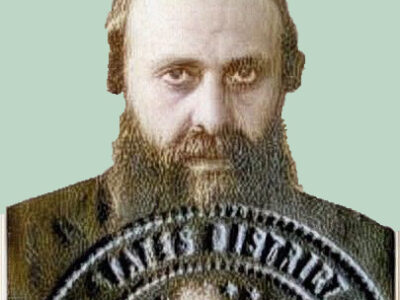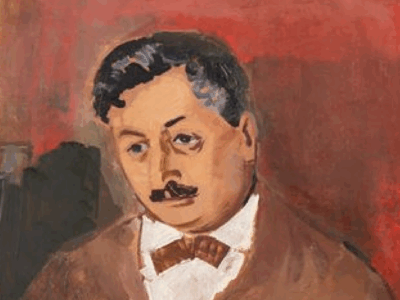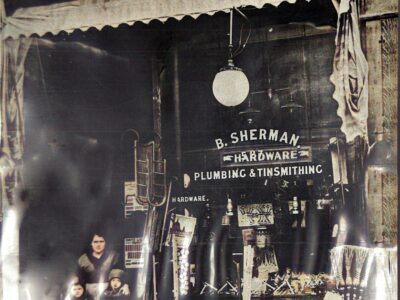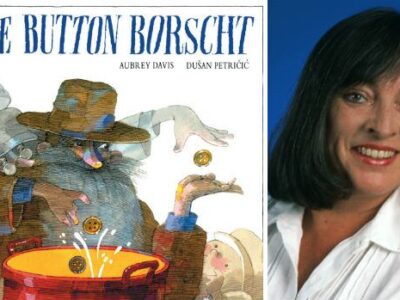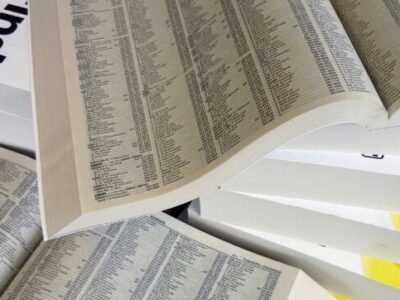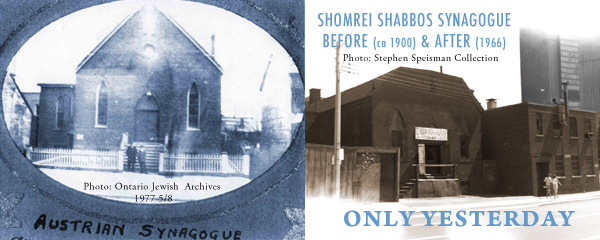 Toronto publisher Now and Then Books’s latest title — Only Yesterday: Collected Pieces on the Jews of Toronto, by Benjamin Kayfetz and Stephen A. Speisman — is a prolifically illustrated book featuring 18 evocative articles by two notable historians of Toronto’s Jewish community.
Toronto publisher Now and Then Books’s latest title — Only Yesterday: Collected Pieces on the Jews of Toronto, by Benjamin Kayfetz and Stephen A. Speisman — is a prolifically illustrated book featuring 18 evocative articles by two notable historians of Toronto’s Jewish community.
Culled from a variety of sources, the pieces in Only Yesterday focus on old downtown community — people, synagogues, Yiddish theatres, newspapers — in the old “Ward” and Spadina neighbourhoods. The book features 144 photographs and illustrations, including many exclusive photos taken by author Speisman that have never been published before.
A former public relations officer at Congress, Ben Kayfetz wrote often about Toronto’s Jewish community and was instrumental in establishing Ontario’s fair employment act, fair housing act and human rights code, achievements for which he was named a member of the Order of Canada. He died in 2002.
Stephen Speisman was the founding director of the Ontario Jewish Archives and served in that capacity for nearly 30 years. He won a City of Toronto Book Award in 1980 for his magnum opus, The Jews of Toronto: A History to 1937. He died in 2008.
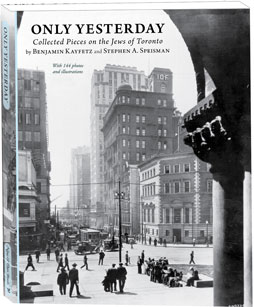 Kayfetz’s contributions to Only Yesterday include an informative piece explaining the names of Toronto synagogues, a profile of legendary politician J. B. Salsberg, and items about the city’s once-influential Yiddish press, Spadina Avenue in the old days, and the mythology of Kensington Market; he also reminisces about a diverse assortment of community leaders, rabbis, pioneers, prizefighters and prominent figures from Mayor Nathan Phillips to anarchist Emma Goldman.
Kayfetz’s contributions to Only Yesterday include an informative piece explaining the names of Toronto synagogues, a profile of legendary politician J. B. Salsberg, and items about the city’s once-influential Yiddish press, Spadina Avenue in the old days, and the mythology of Kensington Market; he also reminisces about a diverse assortment of community leaders, rabbis, pioneers, prizefighters and prominent figures from Mayor Nathan Phillips to anarchist Emma Goldman.
Speisman’s articles include a primary essay on the vanished downtown neighbourhood of St. John’s Ward where thousands of Jewish and other immigrant families settled upon first arriving in Toronto in the early 1900s. He also supplies a history of the once-vibrant local Yiddish theatre as well as profiles of Benjamin Brown, the city’s first Jewish architect, and Rabbi Meyer Levy, an early spiritual leader.
Many of the book’s visuals are bound to appeal to lovers of Toronto’s history. A 1912 photo, for example, shows a three-story tenement building near Old City Hall with one outdoor privy and one outdoor cold-water tap to serve 40 people. In some cases photographs taken decades apart are shown of the same buildings and streets, illustrating how they changed over time.
In its 206 pages, Only Yesterday offers an unprecedented number of photographs of former Toronto synagogues that have either been demolished or converted to other uses; many were taken by Speisman and have never been published before. Photos also came from the City of Toronto Archives, Ontario Jewish Archives, Ontario Archives and various private collections.
A book launch featuring editor-publisher Bill Gladstone occurred in 2013; the book was also featured at the Toronto Jewish Book Festival.
For more information, please visit http://www.billgladstone.ca/bookstore/

